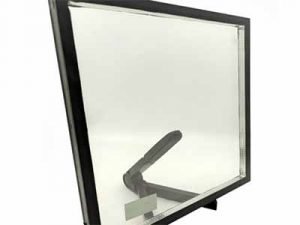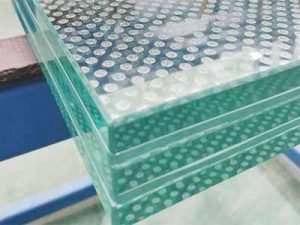What is Toughened Glass?
Toughened glass, which is also known as tempered glass, is produced by heating annealed glass to 650°C softening point and then quenching rapidly.
It increases the glass surface compressive stress and glass internal tensile stress. This results in tempered glass that is four to five times stronger than regular glass. And more heat resistant and shock resistant.
Anyone looking for a stronger solution for their home windows, toughened glass will offer a more resilient, durable, and safe option.
Toughened glass is used in a wide range of situations today and offers many advantages to homeowners. Keep reading to learn about the benefits of toughened glass and the varying standards between countries.
Toughened glass is ideal for anywhere in your home or any item that requires extra protection. If you’ve seen a shattered window before, you’ll know how dangerous it can be. Toughened glass offers a more durable option, which is resistant to higher temperatures.
To create a toughened glass window, the shape of the window must be cut before the toughening process. Once it’s complete, the shape and size of the toughened glass cannot be adjusted.
The Thickness of Toughened Glass
Tempered glass thicknesses including 3mm, 3.2mm, 4mm, 5mm, 6mm, 8mm, 10mm, 12mm, 15mm, 19mm, etc.
The thickness is entirely dependent on what you are planning to use the glass for. If you are adding toughened glass to your roof, it’s likely to be a very different thickness to the glass on a display unit. The bigger space the toughened glass is covering, the thicker you will need the glass to be.
The range of thickness for toughened glass is between 3mm to 19mm. The absolute minimum that is used in homes is 6mm. Imagine having glass staircases in your home – you’ll certainly want them to be strong enough to support your weight each day! For glass floors, it’s recommended to have multiple layers of glass, which will be an absolute minimum of 10mm each.
Types of Toughened Glass
If you’ve ever looked at the toughened glass before for your home, you’ll notice there are multiple options available to you. Just like other types of glass, you’ll find options to fit anywhere in your home. Clear toughened glass is the most commonly found option, which is used for windows, doors, floors, and furniture. Laminated toughened glass is a combination of laminated glass and toughened glass. Laminated glass uses two pieces of glass, which are held together by a PVB plastic layer.
Other options include low iron toughened glass, reflective toughened glass, tinted toughened glass, frosted toughened glass, patterned toughened glass, and Low-E toughened glass. These types of glass focus on a specific aesthetic in comparison to regular glass. If you are looking to add frosted or tinted windows to your home, there’s still an option with toughened glass. Many cars have tinted windows for privacy and use tempered glass for your protection.
Features of Toughened Glass
Toughened glass is 4-5 times stronger than ordinary glass. It’s extremely durable and can easily stand changes to temperature. Its primary features are its strength and heat resistance, which are needed for car windows, shower doors, and balcony windows. Toughened glass is much harder to break than regular glass. However, what many people don’t realize is that it can still shatter. If this does happen, you’ll find it breaks into smaller pieces, which are blunt and safer in comparison to regular glass.
The Benefits of Toughened Glass
Thanks to its manufacturing process, there are many great benefits of toughened glass. The number one reason I’d choose to add toughened glass into my home is its strength. While it comes in at five to six times stronger than ordinary glass, it still has the same appearance. As it can resist heat up to 250°C, it’s suitable for a greater range of uses than regular glass.
Toughened glass is much harder to break due to its strength. However, if it does break for any reason, it is unlikely to cause serious injury due to the small pieces it creates. Another great advantage of toughened glass is its durability. If you have this type of glass in your home, you’ll probably know how rarely it needs to be replaced. As a homeowner, I know this is such a blessing and money saver over the years. Finally, it’s thermal and shock-resistant, so it is much less likely to be damaged.
Advantages of Toughened Glass
Toughened glass has many benefits to consumers, which is why it’s so commonly used today. These are some of the top advantages of using toughened glass:
Durability
Toughened glass is a long-lasting option, which is why it is so commonly used in homes today.
Safety
In the rare situation, it does shatter, you’ll find it creates blunt and small pieces which won’t cause fatal injury.
Versatility
As you can see, toughened glass is used for a whole host of reasons, and the various types of toughened glass make it easy to apply to any home.
SPF Protection
Toughened glass offers users a natural SPF16, as it absorbs 65% of the UV rays.
Soundproofing
This type of glass can reduce sound by up to 60 dB.
Disadvantages of Toughened Glass
While toughened glass offers many great advantages to users, there are also some disadvantages you should consider before opting for this type of glass:
Can’t be adjusted
Without a doubt, the biggest disadvantage of toughened glass is its inability to be re-cut once created. You’ll need to choose the precise size and shape of your glass before it undergoes heat treatment.
Beware of the edges of the glass
When the edges of the glass get damaged, in turn, the whole of the toughened glass will shatter. This is the area where it’s most likely to break, which can result in damage to the whole window pane.
Higher Cost
Due to the lengthy process of creating toughened glass, it naturally is more costly than other options.
When is Toughened Glass Used?
If you think about any windows or items in your home with glass, there’s a strong chance that tempered glass is used in them.
Of course, it’s used in windows and doors of all types, but you’ll also find toughened glass in your bathroom, on your car, and in your pet’s aquarium. Phone screen protectors often use this type of glass, as do the trays in your fridge.
Finally, unexpected uses of this type of glass include diving masks and plates.
Standards for Toughened Glass Around the World
As with many construction materials, standards vary for toughened glass in different parts of the world. Below you’ll find the regulations for toughened glass around the world. In all of these regions, toughened glass is incredibly popular and found throughout homes and cars.
Standards in the EU: EN12150 & EN12600
The EU has a whole series of regulations in regards to glass standards. Depending on when and where you plan to use toughened glass, you will be subjected to the EN regulations for that function and type of glass. The European Harmonised Standards indicate the type of glass which requires a CE marking. There are specific rules for tempered glass in various situations, such as a minimum thickness of 10 mm for a glass panel in an elevator.
Standards in America: ASTM C1048
In the US, toughened glass is used for safety glazing. Tempered glass is a requirement in the US for certain buildings and parts. Skylights, glass near swimming pools, and elevators must use toughened glass. The International Residential Code states when and where toughened glass will be used, and this is primarily to prevent injury.
Standards in Oceania: AS/NZS2208
Any glass installed in buildings in Oceania will need to comply with their country’s standards. In Australia, the Australian Standards state that glass must be marked to ensure it complies with AS2208. Regulations in Australia state the exact thickness and maximum areas glass can cover when it’s installed for a whole variety of reasons. New Zealand also requires all glass to be marked, and you’ll see a T to indicate toughened glass.
Standards in China: CCC Standard
For toughened glass to be used in China, it needs the relevant China Certification (CCC). The CCC is required for use in buildings, vehicles, and railways. A series of tests are undertaken on any glass used in China, which includes a heat test, strength test, chemical resistance test, and optical test. Any glass imported into China must pass these tests before use on the market.
Future Trends for Toughened Glass
The future is looking bright for toughened glass, with more and more buildings opting for glass walls and floor-to-ceiling windows. I’m sure you’ve seen many modern buildings built from glass, and this trend is only going to continue to appear in the upcoming years. Expect to see toughened glass used to create modern designs and unique structures, thanks to its durability and strength. Also, we can expect the toughened glass to continue to be used in electric vehicles and electronics, such as VR headsets.
Please call or email us with any questions or inquires.



